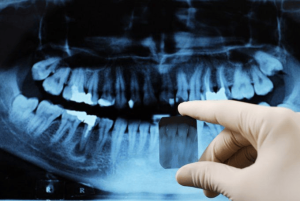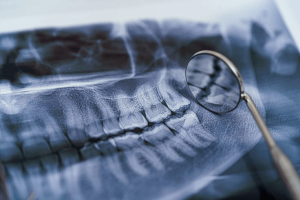What Do Cavities Look Like on X Ray
What Do Cavities Look Like on X Ray
Cavities, also known as dental caries or tooth decay, can appear different on dental X-rays depending on their stage and location. Here are some common characteristics:
- Initial Stage (Enamel Decay): In the earliest stage, when the enamel is affected, cavities may not be visible on X-rays. However, a trained dentist might notice demineralization or changes in the enamel’s density.
- Moderate Decay (Dentin Decay): As the decay progresses into the dentin (the layer beneath the enamel), it may appear on X-rays as a dark shadow or a dark spot on the tooth. This shadow indicates that the tooth structure is compromised.
- Advanced Decay (Pulp Involvement): When the decay reaches the innermost part of the tooth, known as the pulp, it can be seen as a larger dark area on the X-ray. This often indicates the need for more extensive dental work, such as a root canal.
- Cavity Size and Shape: The shape and size of cavities can vary. They may appear as small dots, irregularly shaped areas, or even as larger, more defined lesions on the X-ray.
- Location: Cavities can occur on any surface of a tooth. They may be found between teeth (interproximal), on the biting surfaces (occlusal), or on the sides of the teeth (buccal or lingual). The location of the cavity will determine its appearance on the X-ray.
Dentists use what do cavities look like on X rays to detect and assess cavities because they can reveal issues that are not visible to the naked eye, particularly in the early stages of decay. Regular dental check-ups and X-rays help in the early detection and treatment of cavities to prevent further damage to the teeth. Visit our website for more information about different topics digitechslife.com
Understanding Dental X-rays
Before we dive into the specifics of what do cavities look like on X rays, let’s grasp the fundamentals of dental what do cavities look like on X rays. These are diagnostic images captured by exposing the mouth to low levels of radiation. X-rays pass through soft tissues but are absorbed by dense materials like teeth and bones. This differential absorption allows dentists to visualize the structures inside your mouth.
What Are Dental Cavities?
Dental cavities, often referred to as caries or tooth decay, are essentially holes or openings that develop in the teeth over time. They are a result of the demineralization of the enamel and the subsequent breakdown of tooth structure. Cavities can cause discomfort, pain, and even tooth loss if left untreated.
Why Are X-rays Used for Cavity Detection?
Dental X-rays are an invaluable tool for dentists when it comes to cavity detection. Unlike a visual examination,what do cavities look like on X rays can reveal cavities that may be hidden between teeth or below the gumline. This makes them a crucial asset in early diagnosis.
Appearance of Cavities on X-ray
Cavities appear differently on X-rays depending on their size and location. In the early stages, when the cavity is small, it may not be visible on the X-ray. However, as the cavity progresses, it will manifest as a dark spot or shadow on the image. This dark area indicates the presence of a cavity, and its size and depth can be assessed by the dentist.
Different Types of Dental X-rays
Dental professionals use various types of X-rays to capture different views of the oral cavity. The two main categories are:
Intraoral X-rays
Intraoral X-rays are the most common type and involve placing a small film or sensor inside the mouth. They provide detailed images of individual teeth and are excellent for detecting cavities between teeth and the health of the tooth’s roots.
Extraoral X-rays
Extraoral what do cavities look like on X ray are taken outside the mouth and focus on the larger structures of the face and jaw. While they are less detailed than intraoral X-rays, they are useful for detecting issues such as impacted teeth or jaw disorders.

X-ray Sensitivity in Cavity Detection
The sensitivity of what do cavities look like on X rays in detecting cavities makes them a preferred choice for dentists. Even small cavities that are invisible to the naked eye can be identified through X-ray imaging. This early detection enables prompt treatment and prevents the cavity from worsening.
Benefits of Early Cavity Detection
Detecting cavities early through X-rays offers several benefits, including:
- Minimizing tooth damage
- Preventing the need for extensive dental work
- Saving time and money on treatments
- Preserving overall oral health
Cavity Treatment Options
The treatment for cavities varies depending on their size and severity. Common treatments include dental fillings, crowns, and root canals. Your dentist will recommend the most suitable option after assessing your X-rays and the extent of the cavity.
Preventing Cavities
Preventing cavities is always better than treating them. Good oral hygiene practices, a balanced diet, and regular dental check-ups can go a long way in maintaining cavity-free teeth.

Conclusion
In conclusion, dental X-rays are an indispensable tool for dentists to detect and assess cavities. Understanding what cavities look like on X-ray images underscores the importance of regular dental check-ups and early diagnosis. By following good oral hygiene practices and seeking professional dental care, you can ensure that your smile remains healthy and cavity-free.
FAQs
- How often should I get dental X-rays?
The frequency of dental X-rays varies based on your oral health and risk factors. Your dentist will determine the appropriate schedule for you.
- Are dental X-rays safe?
Yes, dental X-rays are considered safe, as the radiation exposure is minimal. Dentists take precautions to minimize radiation exposure.
- Can X-rays detect cavities between teeth?
Yes, X-rays can detect cavities between teeth, which are not visible during a regular visual examination.
- What is the cost of cavity treatment?
The cost of cavity treatment depends on the type and extent of the cavity and the region where you live. It’s best to consult with your dentist for an estimate.
- Is fluoride effective in cavity prevention?
Yes, fluoride is effective in strengthening enamel and preventing cavities. It is commonly found in toothpaste and drinking water.
